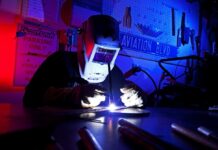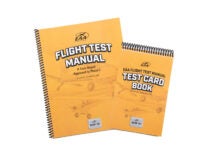 Fatal accidents in experimental category aircraft, particularly amateur-built aircraft, continued their decline during the Federal Aviation Administration’s 2017 fiscal year that ended September 30, falling to historic lows.
Fatal accidents in experimental category aircraft, particularly amateur-built aircraft, continued their decline during the Federal Aviation Administration’s 2017 fiscal year that ended September 30, falling to historic lows.
For the 12-month period from October 1, 2016, to September 30, 2017, fatal accident totals in amateur-built aircraft were down 18 percent to just 27, compared with 33 during the 2016 fiscal year. That continues a four-year trend that has seen a total drop of 47 percent in fatal accidents, despite an increasing amount of flight hours each year over that period. The specific totals compare to 40 amateur-built aircraft fatal accidents during the 2015 fiscal year and 51 in the 2014 fiscal year.
In addition, fatal accident totals for the experimental category overall, including racing aircraft, those used for exhibit only, research-and-development, and some types of light-sport aircraft, dropped as well. Total fatal accidents fell from 49 to 45 during the 12-month measurement period ending September 30, 2017. The final figures are nearly 25 percent below the FAA’s “not-to-exceed” goal of 59 fatal accidents for that period.
“These are historic lows for fatal accident in amateur-built aircraft and this continuing trend is a credit to everyone who is focusing on safety,” said Sean Elliott, vice president of Advocacy and Safety for the Experimental Aircraft Association (EAA), who highlighted these figures at the FAA General Aviation Safety Summit in late October. “The overall fatal accident numbers remain much lower than other recreational pursuits, such as paddle sports, skiing and snowboarding, and driving all-terrain vehicles. Statistics even show that being involved in a fatal amateur-built aircraft accident is less likely than being killed in a lightning strike incident.”
EAA has worked closely with the FAA and the National Transportation Safety Board on recommendations to reduce fatal accidents, including through participation in the FAA General Aviation Joint Steering Committee that EAA co-chairs. The EAA focus has also included the Founder’s Innovation Prize competition that seeks innovations to reduce loss-of-control accidents in amateur-built aircraft; a focus on transition and recurrent training; and use of an additional safety pilot during initial flight testing in amateur-built aircraft.
“These efforts build upon EAA’s longstanding Technical Counselor and Flight Advisor programs, and additional safety materials available through EAA’s flagship Sport Aviation magazine,” Elliott said. “Further reducing the accident totals is a continuing challenge, but one that is foremost as part of EAA’s mission to grow participation in aviation.”













